

On the previous page, I showed a picture of M42 composed from exposures in Hydrogen-α (656 nm), Oxygen (496 and 501 nm), and Sulphur (673 nm). The assignment of these to the three visual colours (red, green, and blue) is rather arbitrary as both SII and Hα are in the red. I have also imaged M42 with broadband RGB filters so I thought it would be interesting to use the broadband blue image to combine with two of the others. These are shown below.
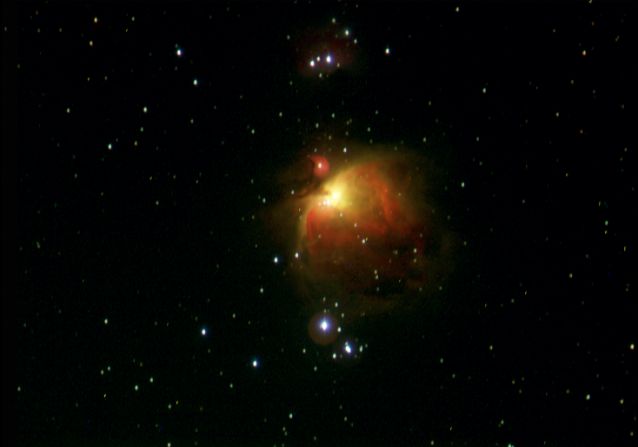
In my original picture, I assigned the blue channel to the light from Sulphur even though that light is red. This resulted in much of the brighter parts looking purple. Here I have used the image made in broadband blue light (using the Astronomik blue filter from the LRGB set) for the blue channel in place of the Sulphur image. This gives a more natural colour to the nebula.
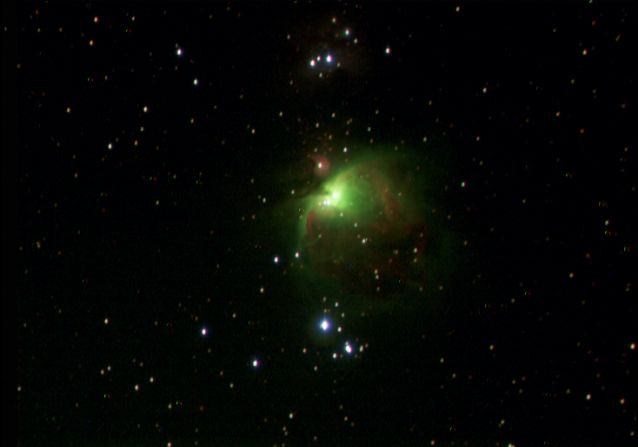
Everyone images M42 in light from Hydrogen. Here I thought it would be interesting to eliminate the Hydrogen-α light completely. (Hydrogen is not eliminated completely as the blue filter has a 50% transmission for the Hydrogen-β light.) This picture uses light from Sulphur for the red, oxygen for the green, and the broadband blue light. The green tinge indicates that Oxygen is the next most abundant element, after Hydrogen, contributing to the emission. (Remember that M42 is an emission nebula.)
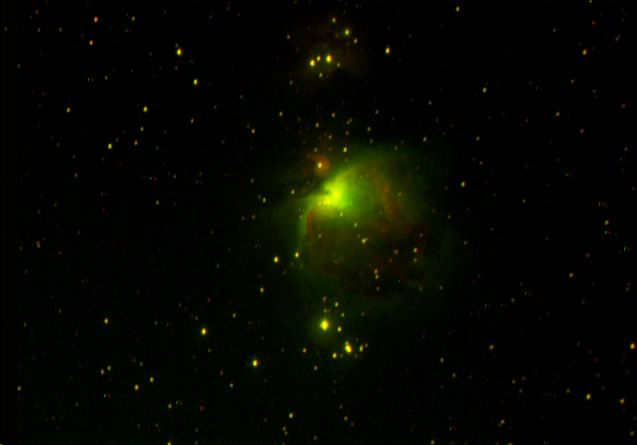
This is in light from Sulphur (red) and Oxygen (green) only. Since there in no blue, the stars are yellow.
And now more for fun...
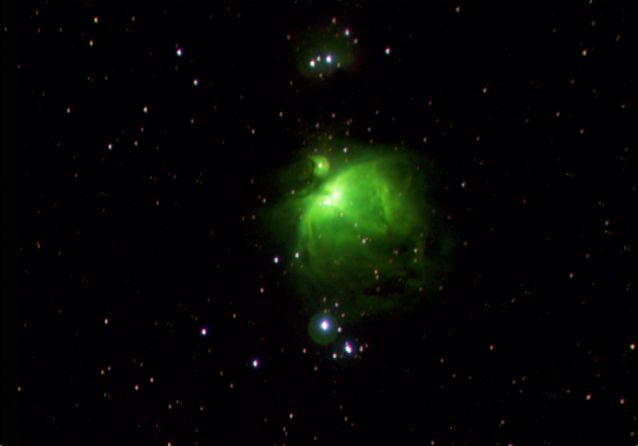
This is in light from Sulphur (red), Hydrogen (green), and broadband blue. Since Hydrogen is the most abundant element, its emission dominates and the image is green.
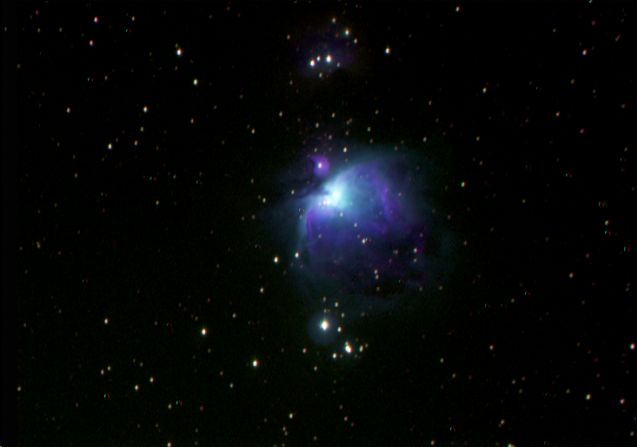
This is in light from Sulphur (red), Oxygen (green), and Hydrogen (blue). Since Hydrogen is the most abundant element, its emission dominates and the image is blue.
Home Back to DSOs